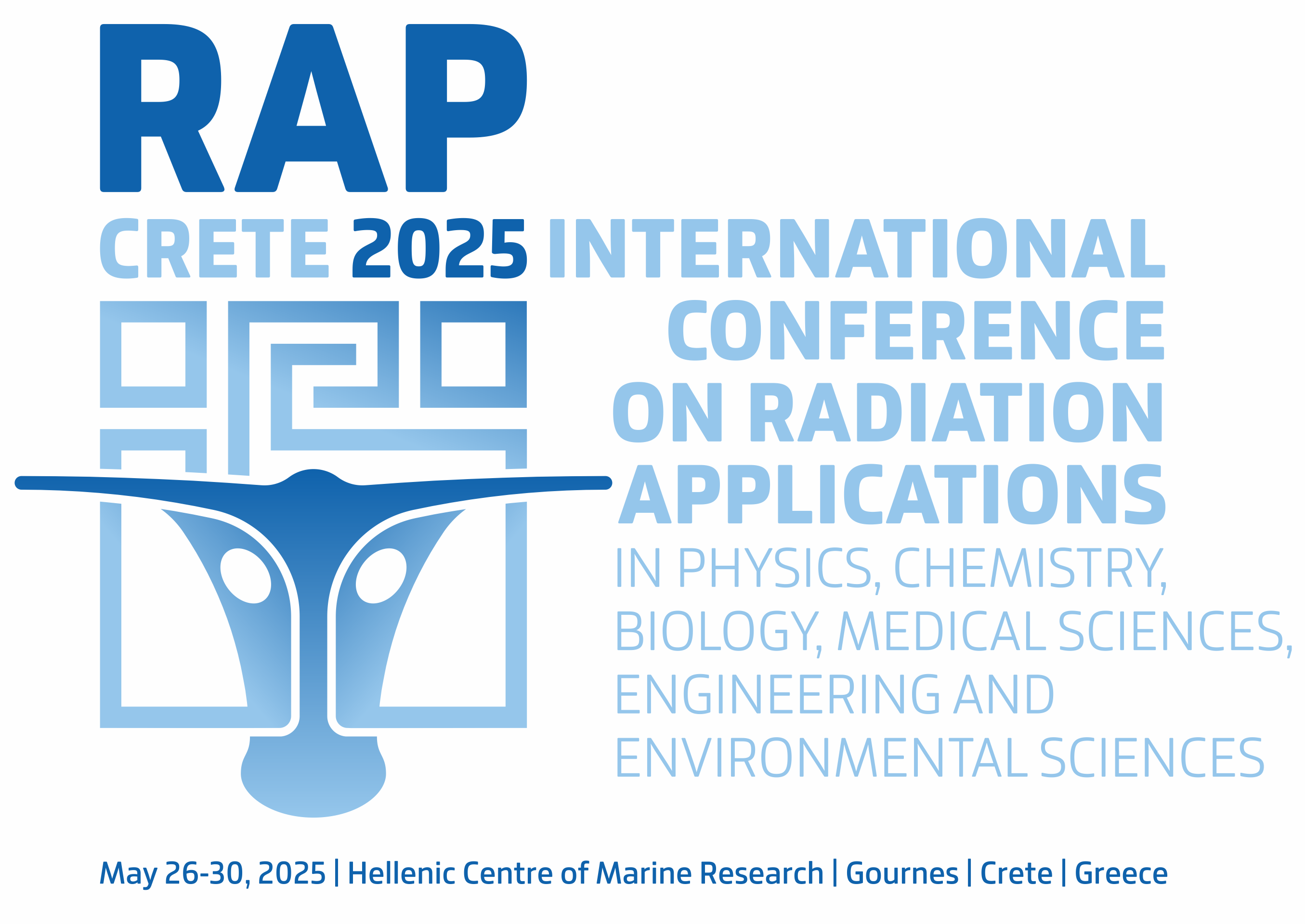Vol. 7, 2022
Medical Imaging
EFFECT OF READER SOFTWARE IN IMAGE QUALITY METRICS OF X-RAY COMPUTED RADIOGRAPHY SYSTEMS
A. Galanopoulou, A. Katsigiannis, A. Bakas, C. Kantsos, C. Michail, K. Ninos, L. Lavdas, V. Koukou, N. Martini, I. Valais, G. Fountos, I. Kandarakis, N. Kalyvas
Pages: 86–90
DOI: 10.37392/RapProc.2022.20
Abstract | References | Full Text (PDF)
X-rays are used in medical imaging to acquire information from inside the human body. The quality of the information is affected by the tube voltage responsible for X-ray penetration and contrast as well as the tube load which affects image noise. Another important part is the X-ray detector. It consists either of a scintillator component coupled to semiconductor (indirect detection) or only of a semiconductor part that directly converts the X-rays to electron-hole pairs which impinge onto an electronic circuit (direct detection). An intermediate solution is the use of a Computed Radiography cassette (CR) which has a scintillator with introduced defaults. These defaults act as traps for the radiation excited electrons and prohibit the spontaneous optical photon generation. The cassette is then excited by a LASER beam provoking the de-excitation of the trapped information carriers. The optical photons generated are collected by a photocathode digitized and presented as an image. The image is further manipulated in an automated manner depending upon the examination. The purpose of this work is to examine the effect of the automated software manipulation to the image quality metrics. A theoretical model based in the linear cascade system theory was utilized. The model has considered the incident X-rays, their absorption in the CR, the generation and trap of electrons, the optical photon generation emission and capture at the photocathode. The model predicted the electrons per incident
X-ray as well as the pre-sampled Modulation Transfer Function (MTF) which defines the spatial resolution of the system. The data needed for the model were obtained from literature. The calculation of optical photon transport was done by an analytical solution of Boltzmann diffusion equation. In order to find the effect of the software a PTW edge phantom was irradiated by a BMI GMM X-ray generator and imaged by a FujiFilm ST-VI cassette and a Capsule-X scanner. The images were shown in ‘chest’, ‘patella’ and ‘PDR’ mode to simulate a high latitude, a high contrast and a generic imaging window respectively. The MTF was estimated by Fourier transforming a differentiated edge profile. The contrast was obtained by irradiating the Artinis CDRAD low contrast PMMA phantom and 3Dprinted PLA phantom, both for ‘breast’ imaging conditions. The data were processed through ImageJ and Octave free software. The best MTF agreement was found for patella imaging conditions. It was found that the image contrast was affected by the phantom material. The PMMA phantom showed better agreement with the experimental results. Since image quality parameters are phantom material based, each new phantom should have a reference image.
-
H. Aichinger, J. Dierker, S. Joite-Barfuẞ, M. Säbel, “Principles of X-Ray
Imaging,” in
Radiation Exposure and Image Quality in X-ray Diagnostic Radiology:
Physical Principles and Clinical Applications
, 2nd ed., Berlin Heidelberg, Germany: Springer-Verlag, 2012, ch. 1, pp. 3 – 7.
DOI: 10.1007/978-3-642-11241-6_1 -
I. S. Kandarakis, “Luminescence in medical image science,” J. Lumin., vol. 169, part B, pp. 553 – 558, Jan. 2016.
DOI: 10.1016/j.jlumin.2014.11.009 -
M. Rabbani, R. Shaw, R. Van Metter, “Detective quantum efficiency of imaging systems with amplifying and scattering mechanisms,” J. Opt. Soc. Am. A, vol. 4, no. 5, pp. 895 – 901, May 1987.
DOI: 10.1364/josaa.4.000895
PMid: 3598742 -
M. Rabbani, R. Van Metter, “Analysis of signal and noise propagation for several imaging mechanisms,” J. Opt. Soc. Am. A, vol. 6, no. 8, pp. 1156 – 1164, Aug. 1989.
DOI: 10.1364/JOSAA.6.001156 -
R. M. Nishikawa, M. J. Yaffe, “Model of the spatial-frequency-dependent detective quantum efficiency of phosphor screens,” Med. Phys., vol. 17, no. 5, pp. 894 – 904, Sep. 1990.
DOI: 10.1118/1.596583 -
I. A. Cunnigham, M. S. Westmore, A. Fenster, “A spatial-frequency dependent
quantum accounting diagram and detective quantum efficiency model of signal
and noise propagation in cascaded imaging systems,” Med. Phys.,
vol. 21, no. 3, pp. 417 – 427, Mar. 1994.
DOI: 10.1118/1.597401 -
H. K. Kim, S. M. Yun, J. S. Ko, G. Cho, T. Graeve, “Cascaded modeling of
pixelated scintillator detectors for x-ray imaging,” IEEE Trans. Nucl. Sci., vol. 55, no. 3, pp. 1357 – 1366, Jun. 2008.
DOI: 10.1109/TNS.2008.919260 -
C. M. Michail et al., “Experimental and theoretical evaluation of a high
resolution CMOS based detector under x-ray imaging conditions,” IEEE Trans. Nucl. Sci., vol. 58, no. 1, pp. 314 – 322, Feb. 2011.
DOI: 10.1109/TNS.2010.2094206 -
P. Liaparinos, N. Kalyvas, I. Kandarakis, D. Cavouras, “Analysis of the
imaging performance in indirect digital mammography detectors by linear
systems and signal detection models,” Nucl. Instrum. Methods Phys. Res. B, vol. 697, pp. 87 – 98, Jan. 2013.
DOI: 10.1016/j.nima.2012.08.014 -
S. Vedantham, A. Karellas, “Modeling the performance characteristics of
computed radiography (CR) systems,” IEEE Trans. Med. Imaging, vol.
29, no. 3, pp. 790 – 806, Mar. 2010.
DOI: 10.1109/TMI.2009.2036995
PMid: 20199915
PMCid: PMC5228607 -
S. M. Kengyelics, J. H. Launders, A. R. Cowen, “Physical imaging performance of a compact computed radiograpghy acquisition device,” Med. Phys., vol. 25, no. 3, pp. 354 – 360, Mar. 1998.
DOI: 10.1118/1.598212 -
I. Kapetanakis, G. Fountos, C. Michail, I. Valais, N. Kalyvas, “3D printing x-ray quality control phantoms. A low contrast paradigm,” J. Phys.: Conf. Ser., vol. 931, 012026, 2017.
DOI: 10.1088/1742-6596/931/1/012026 -
Simulation of X-ray spectra, on-line tool for the simulation of x-ray spectra
, Siemens Healthineers, Erlangen, Germany.
Retrieved from: https://www.oem-products.siemens-healthineers.com/x-ray-spectra-simulation
Retrieved on: Mar. 15, 2019 -
R. Nowotny, XMuDat: Photon attenuation data on PC version 1.0.1, IAEA Nuclear Data Section, Vienna, Austria, 1998.
Retrieved from: https://www-nds.iaea.org/publications/iaea-nds/iaea-nds-0195.htm
Retrieved on: Mar. 15, 2019 -
W. Rasband, ImageJ version 1.47h, National Institutes of Health, Bethesda (MD), USA, 2012.
Retrieved from: https://imagej.nih.gov/ij/
Retrieved on: Mar. 15, 2019


